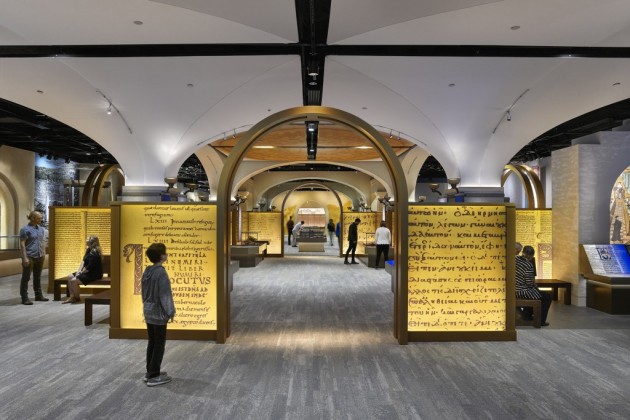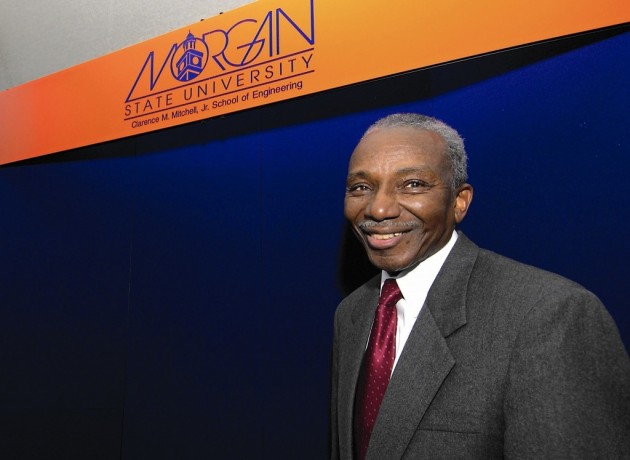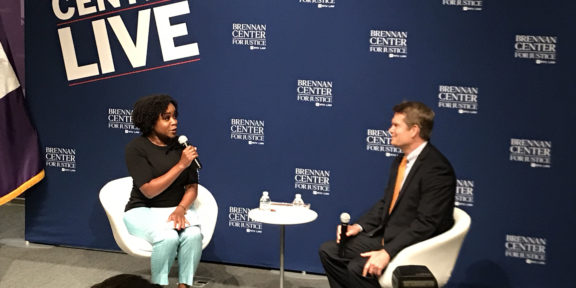Museum of the Bible Opens in D.C.

Photo Courtesy: Alan Karchmer. Hebrew Bible Exhibit
Religion can divide people of all ages, races, nationalities and experiences. But the new Museum of the Bible hopes to unite people across all platforms.
“Pretty diverse, we’ve had people from all over the United States, [from] Jerusalem, Africa, China. The people [coming] are diverse,” said Ugenia Bagley, a museum security guard on the different people who have been visiting the museum since its opening.
Located just east of Capitol Hill, in Southwest D.C., standing eight stories tall and encompassing more than 400,000 sq ft., the museum is home to many bible artifacts, the world’s largest private collection of Torah’s, Dead Sea scrolls, and early copies of the New Testament. The museum includes unique finds like Elvis Presley's personal bible and a restaurant that lists many biblical foods on the menu like manna.
“Attendance has been strong in the early weeks, they’ve tried to time the tickets so that we have a strong opening,” museum representative Michelle Farmer said.
Steve Green, owner of the conservative national chain Hobby Lobby, is the chair of the museum and largest donor to this $500 million project. He promised his vision a decade ago, when he announced his desire to create a museum dedicated to Scripture. Though many know Green and his chain for their staunch conservative views and Bible interpretations when they made headlines after challenging the contraception mandate under Obamacare in 2015, the museum does not force an opinion on visitors.
“The museum has fence posts — limits. It doesn’t overtly say the Bible is good — that the Bible is true,” said Green, in an interview with The Washington Post. “That’s not its role. Its role is to present facts and let people make their own decisions.”
Though the museum does not take a stance on whether Bible teachings are right or wrong, many were drawn to the museum because of its subject matter.
“I think it’s important for people to learn about Jesus and about religion. Maybe it will inspire [people], maybe not,” said Bagley, on why it is important that a museum like this exists.
Museum attendee, Tyra N. General, says that this museum is important because, “the Bible is key to not only those who are currently Christians, but also to so many that were Christians. The Bible has great historical significance not only for the history of not just the United States but the world.” Central museum exhibits include those dedicated to the history, narrative and impact of the Bible.
The museum focuses a lot on the role that Bible has played in shaping a variety of things like world history, fashion, calendars, names and language.
The nonsectarian museum includes exhibits like the Impact of the Bible, the World of Jesus of Nazareth and an interactive Noah’s Ark for children. In an effort to making the museum modern and engaging, in contrast to its subject matter, the museum incorporates lots of technology into its exhibits, though they didn’t meet the standards of all visitors.
“It’s not engaging as I thought it would be. I know it's about the Bible, I didn’t expect it to be rough and tumble, but a little more engaging. I was just expecting a little bit more,” said Fred Crowder, who was visiting D.C. from Louisiana, on his thoughts on the museum exhibits.









